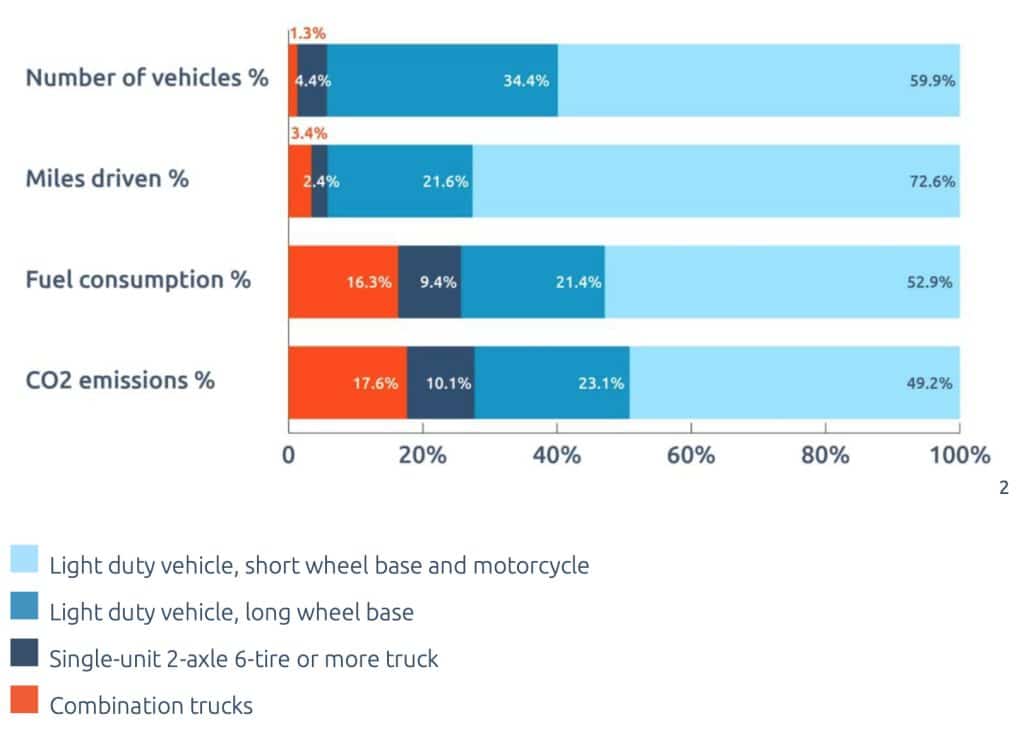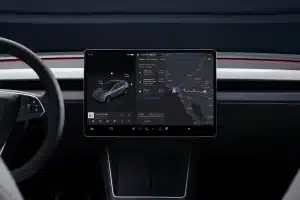Key Points
- 🚚 A new report emphasizes the need to prioritize electrifying commercial vehicles due to their significant contribution to emissions despite being a smaller portion of the vehicle population.
- 🛍️ Adiona Tech’s Connected Thinking report suggests that last-mile combination trucks should be electrified by 2025 for urban deliveries of groceries, parcels, furniture, and other goods.
- 🏭 Large combination trucks, representing only 1 percent of vehicles on the road, contribute to 18 percent of vehicle emissions.
- 📊 The report highlights that the average fuel consumption of combination trucks is around 20 times higher than that of passenger vehicles.
- ⚡ Electrifying a few combination trucks can have a significant impact, equivalent to many households switching to EVs.
- 🚛 Prioritizing the electrification of vehicles with high mileage and low fuel efficiency, like large freight trucks, is crucial in reducing emissions effectively.
- 📦 Companies like FedEx, Amazon, Walmart, and more are exploring electric last-mile delivery vehicles to address this issue.
- 🥤 PepsiCo, a supporter of Adiona Tech, has started electrifying its semi-truck fleet, taking steps toward sustainability goals.
A new report shows that commercial vehicles are much higher polluters than passenger vehicles despite making up a much smaller portion of cars on U.S. roads. For this reason, the study’s authors say the U.S. should prioritize electrifying the commercial vehicles sector rather than just focusing on passenger vehicles.
PepsiCo- and KPMG-backed software logistics company Adiona Tech shared the Connected Thinking report on Tuesday, which suggests that last-mile combination trucks be electrified as soon as possible to help fight CO2 emissions. The company says that all urban deliveries of groceries, parcels, furniture and other goods should be performed by electric vehicles (EVs) by 2025.
“Commercial vehicles are a much bigger polluter than passenger cars and they are in desperate need of modernization,” Adiona writes in the report. “Large combination trucks are just 1 percent of vehicles on the road, but they produce 18 percent of vehicle emissions.”
The study compared Bureau of Transportation Statistics figures from 2019 to those of 2020 and 2021, looking at vehicle miles driven by passenger cars and trucks, along with their associated emissions. What it found was that emissions decreased significantly in 2020 and 2021, while truck miles and their associated emissions increased above 18 percent of road traffic emissions.

The report included several key findings, notably including that the average fuel consumption of combination trucks is roughly 20 times higher than that of a passenger vehicle. The report also says that switching just five of these combination trucks to green alternatives — such as hydrogen fuel cells or lithium batteries — would be comparable to the effects of buying EVs for 100 households.
While the average truck drives about 22,930 miles annually, the report notes that large combination trucks travel an average of 59,929 miles in the same period, and single-unit trucks only average 12,278 miles annually.
According to data sourced from the Bureau of Transportation, light-duty vehicles with a short wheelbase have an average fuel consumption of 481 gallons per year, compared to 640 gallons consumed on average by light-duty vehicles with long wheelbases, and 1,639 gallons on average by single-unit, two-axle trucks with six tires or more. However, the data also shows that combination trucks consume an average of 9,909 gallons annually.
In a press release, Adiona Tech CEO Richard Savoie highlights the need to prioritize larger freight in the fight against carbon emissions, beginning with those that travel the most.
“America needs to aggressively decarbonize the biggest emitters on the road, large freight and delivery vehicles,” Savoie said in the release. “The US automotive industry is at a crossroads, but it needs to act now to electrify every car on the road. Doing so requires connected thinking and collective action. We cannot transform the national fleet of nearly 300 million vehicles overnight, so we need to make decisions that make the biggest difference, for the lowest effort first.”
The passenger vehicle sector has adopted EVs much more quickly than others, as several automakers have now followed Tesla’s lead in building fully electric vehicles. While electrifying every car is still an important goal, Savoie explains, it shouldn’t be the only one.
“Frankly, the data shows that consumer adoption of EVs should not be America’s number one priority,” Savoie said. “Electrifying fleets is by far the most efficient way to reduce vehicle emissions. Every battery we put in a combination truck counts for 20 households buying an EV, and businesses often have fleets of hundreds of vehicles.”
“We must prioritize the electrification of these vehicles that are on the road most, travel the longest distances, and are the least fuel-efficient,” Savoie added.
Several companies have begun piloting or at least stated plans to purchase electric last-mile delivery vehicles, including FedEx, Amazon, Walmart and more.
Adiona Tech backer PepsiCo is one of the first companies to have begun electrifying its semi-truck fleet after purchasing an initial batch of Tesla Semis last year. A recent event showed some serious range results for the Semi, and PepsiCo detailed last month how the truck was helping it reach its own sustainability goals.
You can read the full report from Adiona Tech here.





